Terry Doe gets first go on the latest Brocock Sniper XR incarnation - the Brocock Safari Sniper XR tried and tested!
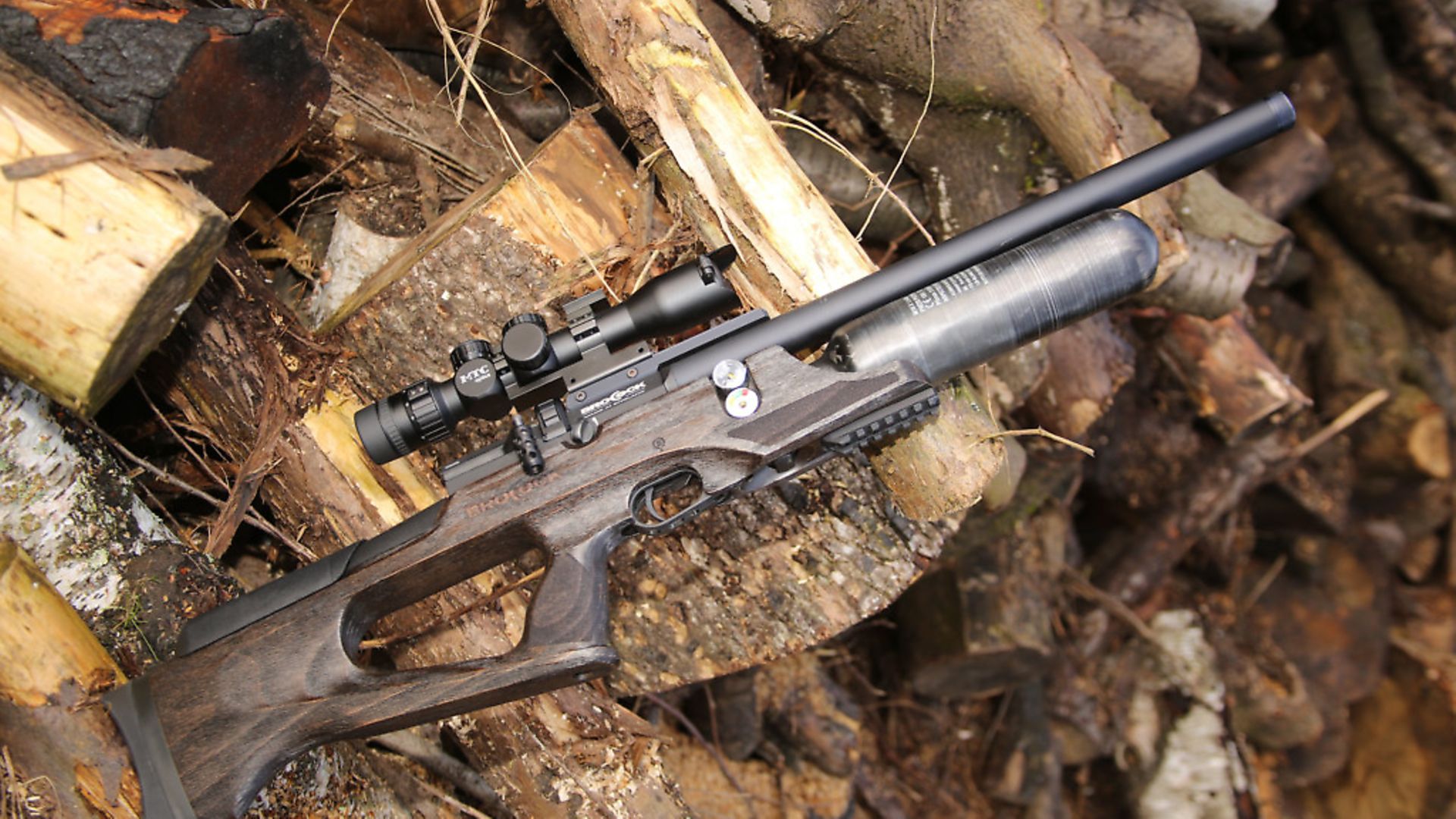 credit: Archant
credit: Archant
Don’t forget to check out our new YouTube channel - Shooting & Country TV!
The privilege of being part of any new rifle’s pre-production test program is never lost on me. It’s an undiminishing honour to have my thoughts, opinions and results included in the final version of a rifle, and whenever I’m asked to contribute these, I give it everything I have. Sometimes, fundamental changes are advised, and at other times, the prototype I’m testing is so close to the finished article that my suggestions are merely cosmetic.
I tested Brocock’s first pre-production Sniper XR and that was one rifle that didn’t need much tweaking, so I wasn’t surprised to discover that the latest variant, the Brocock Sniper Safari XR, was also a done deal.
The important thing for me to remember, though, is the need to discard my previous association with a rifle, and to treat, and test, every variant as a new model, because that’s how the majority of our readers will experience it. Besides, I know Brocock constantly refines and upgrades components when better performance becomes available, and these must be assessed from scratch. Here goes then.
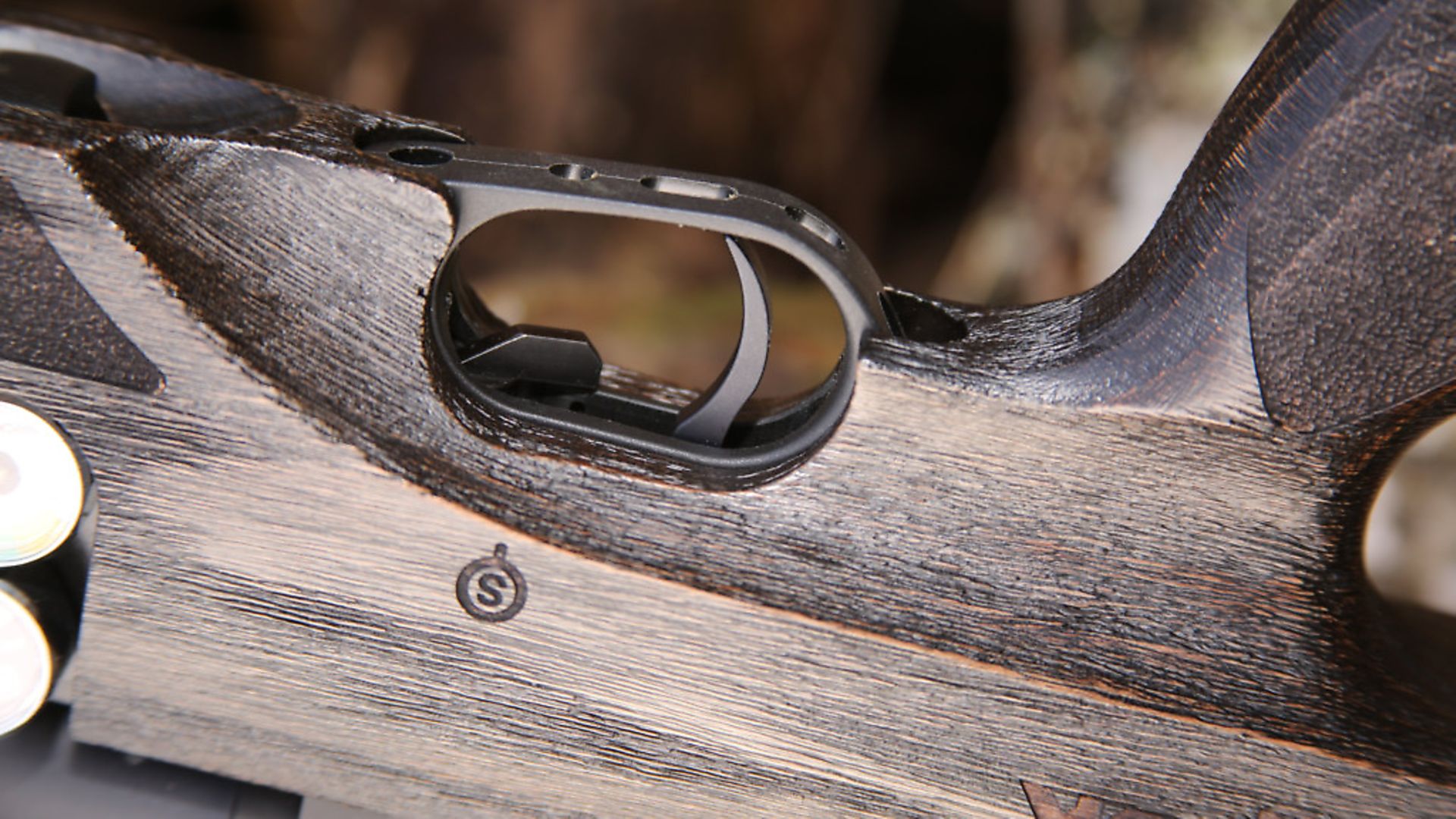 credit: Archant
credit: Archant
OVERVIEW
The Brocock Sniper XR Safari is a compact, semi-bullpup, sidelever-activated, pre-charged pneumatic, multi-shot, with a fixed, carbon-fibre buddy-bottle air supply, and a fully-shrouded, match-grade barrel. The Safari runs the latest, increased capacity, removable, rotary magazine, which holds 13 shots in .177, 11 in .22, and 10 in .25.
The most noticeable feature about the Safari is its dark, ambidextrous, adjustable, laminated stock. A study in sombre solidity, the Safari’s stock definitely has a ‘hi-grade polymer’ look about it, but it’s definitely timber, and super-strong, in addition to being impervious to the elements. Teamed with the matte black of the adjustable cheekpiece, butt pad, action and various fitments, that stock looks perfect for the Safari’s rugged persona.
The two-stage, adjustable trigger is another precision fitment, and this is backed by a manual, resettable safety catch, the status of which is clearly marked on the stock.
The test rifle came, at my request, with a standard dovetail scope mounting system, although the production models will be fully kitted out with what Brocock refers to as ‘a full suite of Picatinny sight and accessory mounting rails’. As far as I’m aware, this is the only difference between what you see here and the full-production Safari.
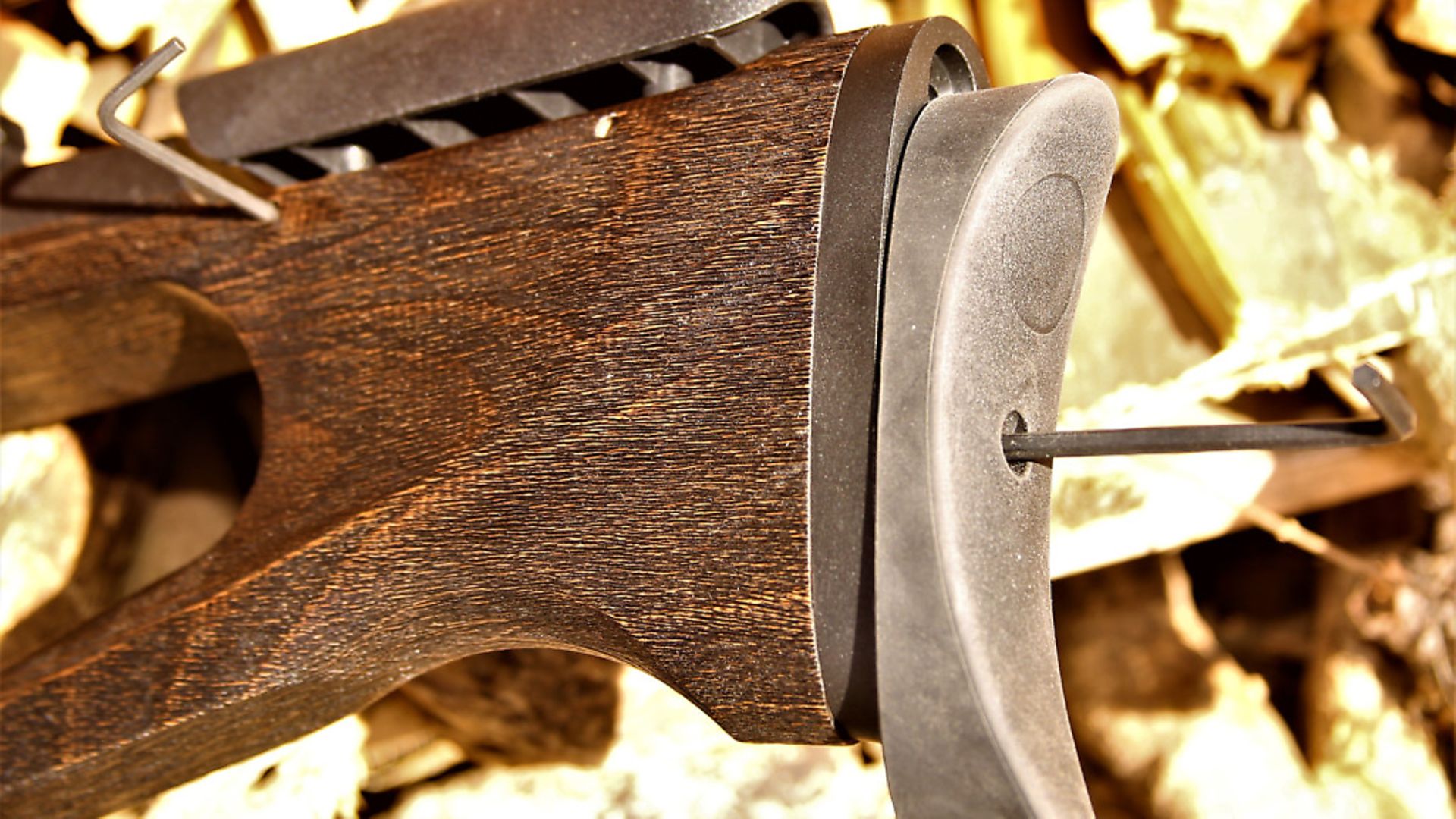 credit: Archant
credit: Archant
BUILT-IN PERFORMANCE
Inside the Safari’s hi-tech action, an incredibly efficient hammer, valve and regulator system combine to make the most of the 480cc HiLite buddy-bottle’s useable air reserves. Huma-Air provides the Safari’s regulator and when set by Brocock’s technicians to meter shot-by-shot air-flow, the result is a consistently impressive output approaching 400 shots in .177. at 11-plus foot-pounds, and comfortably beyond 400 in .22.
Muzzle energy can be varied at the turn of a dial, and in suitably certificated models, that takes the rifle’s performance all the way up to 55 ft.lbs. in .25 calibre, and of course the hammer/reg’ system is tuned accordingly at the factory.
Monitoring available air supply and regulator pressure comes courtesy of a momentary glance at the tandem dials mounted on the right-hand side of the Safari, just above the rifle’s push-fit air inlet valve, which is protected by a magnetic cover.
All in all, the output of this sporting rifle can be set, and adapted, to pretty much anything you’d need to do with it within the UK, and for most of the adventures that lie beyond these shores. Brocock’s reputation and popularity is growing right around the world, and although the company operates under the same roof as Daystate, there’s nothing ‘little brother’ about the new generation of Brocock rifles.
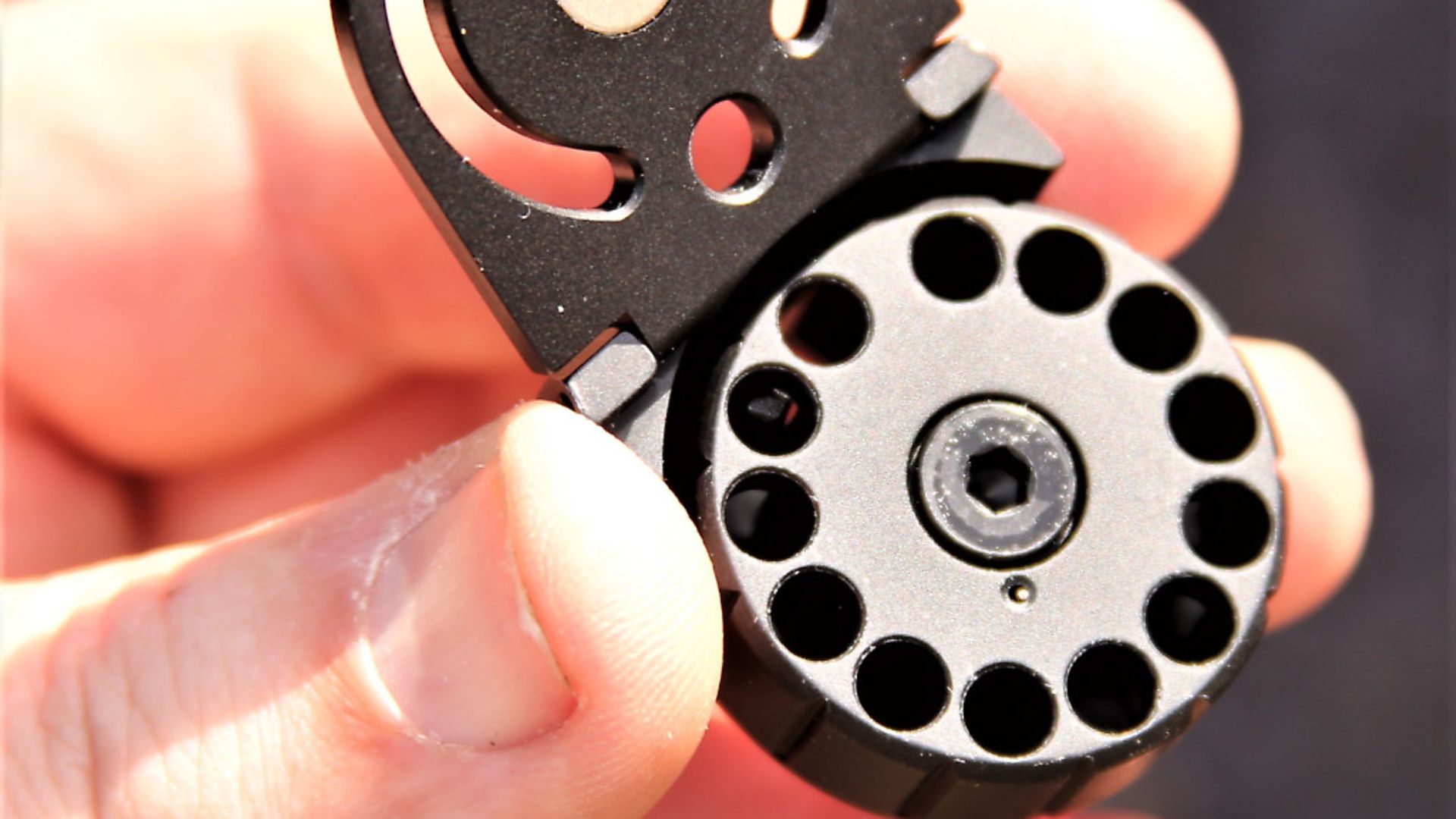 credit: Archant
credit: Archant
HOW EASY IS IT TO USE?
Despite being around for over 30 years, now, the modern pre-charged air rifle can still be viewed as intimidating, in terms of its user-friendly nature. Basically, the question is, ‘will I be able to use it?’ The easy answer is, ‘yes’, and the fact is, driving a car is far more demanding on the user than running a modern PCP, especially this one.
Charging it with air is simplicity itself; just remove the inlet valve protector, attach the charging hose, and inject the required amount of compression, which in this case is 200 bar. Then, shut off the air supply, bleed the charging hose, detach the adaptor, replace the valve cover, and you’re set for hundreds of shots.
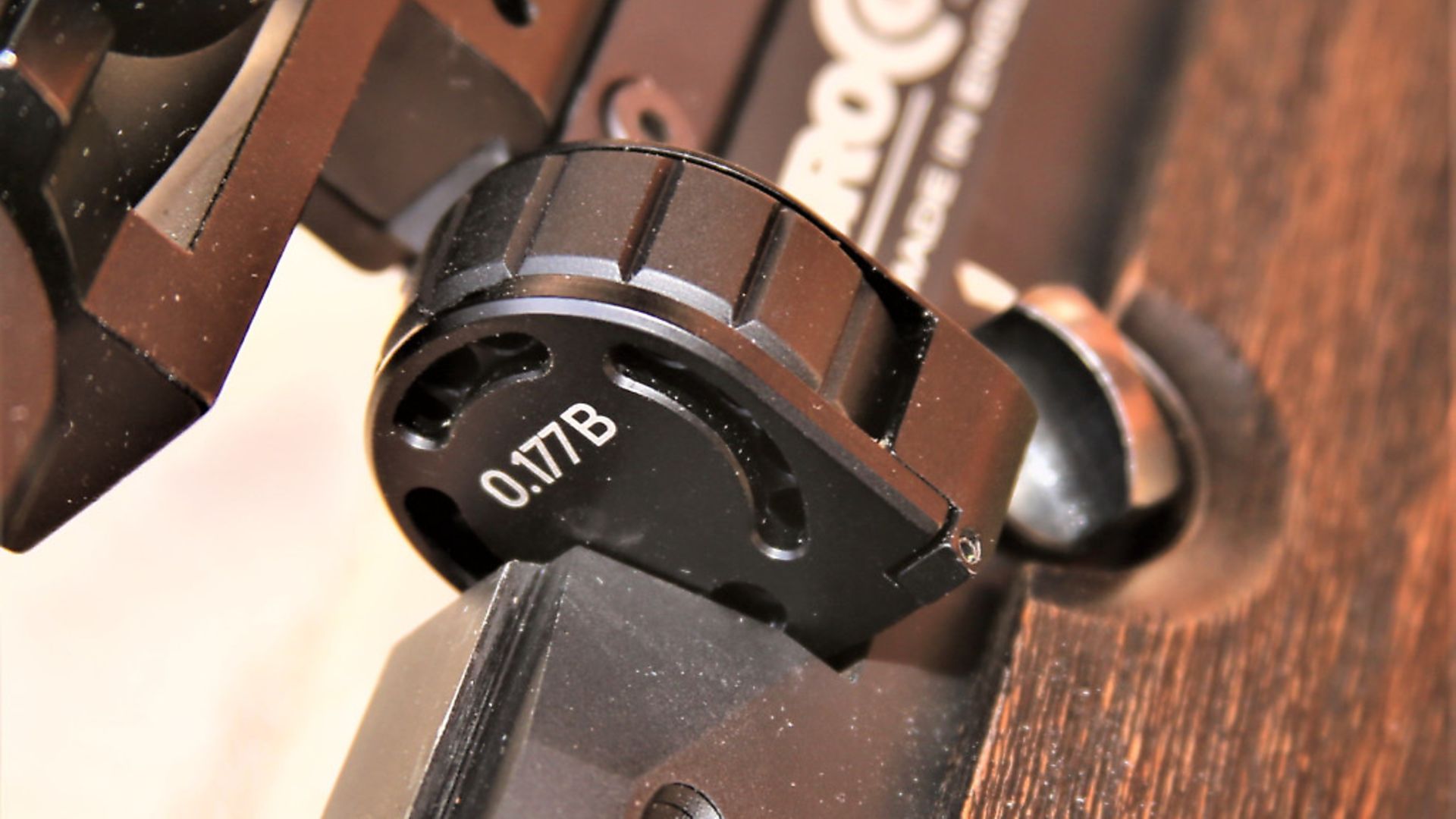 credit: Archant
credit: Archant
LOADING TO MAGAZINE
Next, loading the magazine, which from my feedback, is the area most reluctant PCP users find most challenging. Again, it’s not with this rifle. To make loading the Brocock magazine as easy as possible, it has a flip-open front, which exposes the magazine’s pellet-holding chambers. Once you’ve opened the mag’, rotate the spring-loaded pellet carrier clockwise until it stops, then load a pellet in the first chamber to lock the mechanism in place. Simply load the remaining chambers, close the cover, and load the mag’ into the right-hand side of the Safari’s action. It can’t be loaded the wrong way round, and it only inserts from the right, to enable Brocock users to fit sidewheel scopes. Seriously, it couldn’t be more straightforward, and if you fancy a bit of manual loading, a single-shot pellet tray is also provided. Anyone, but anyone, can run one of these rifles.
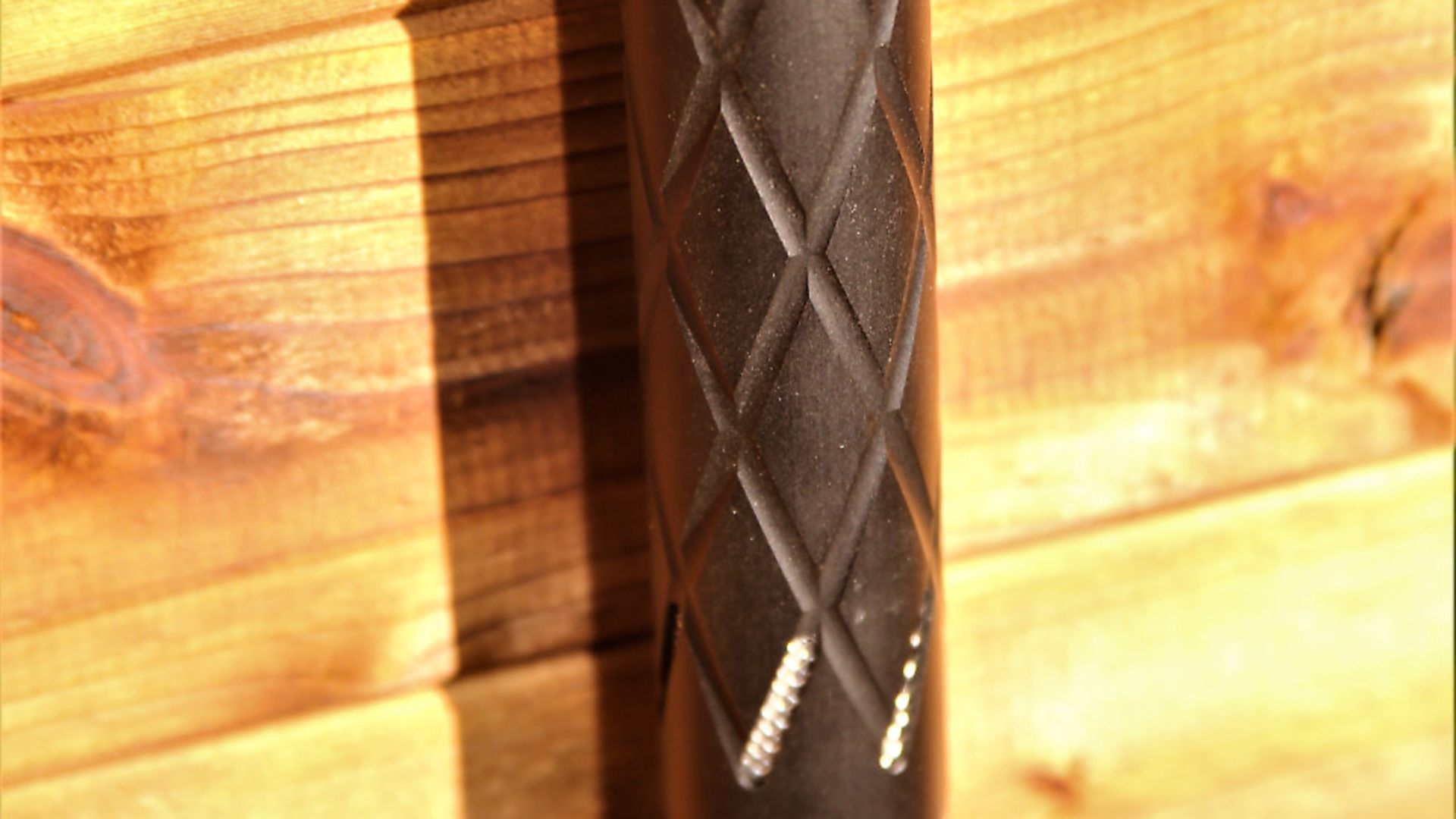 credit: Archant
credit: Archant
ACCURACY IS A GIVEN
In terms of pure, clinical accuracy, we know how the top-performing rifles shoot, and it’s fair to say that what amazed us a few years back has become standard, expected performance, now. That’s progress for you, but it still leaves other areas over which the rifles currently vying for your cash can compete.
These days, it’s not just about how tiny those downrange groups are, but how much help the rifle gives its shooter in the process of producing them. There’s also the amount and quality of the rifle’s output, and as we’ve already seen, this Safari comes commendably equipped with that as standard.
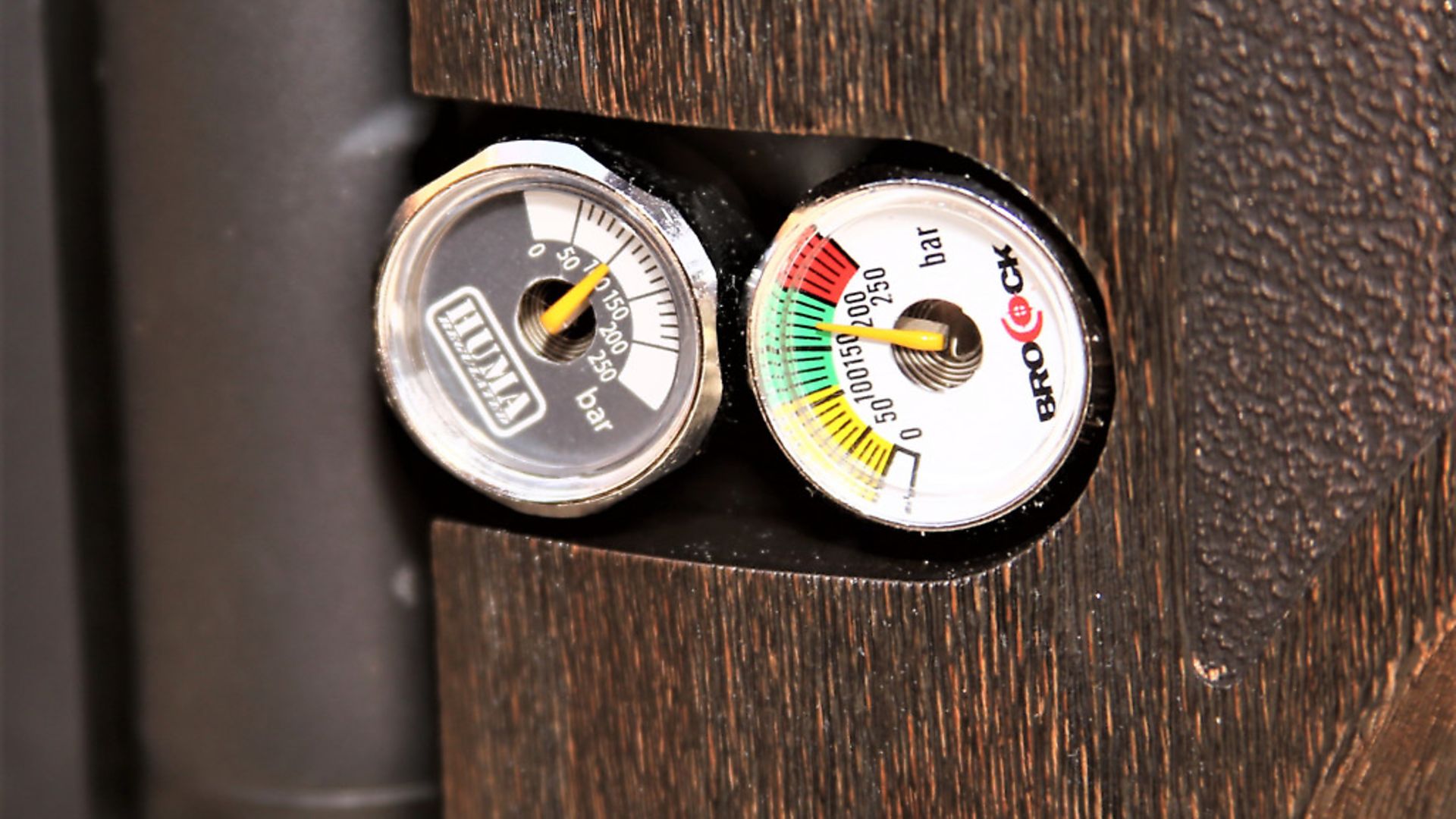 credit: Archant
credit: Archant
TEST RIFLE GROUPS
Back to pure accuracy for a moment, and the obligatory groups report, before I move on to the far more telling, handling data. Using Air Arms Diabolo Field, and Daystate Rangemaster pellets, the test rifle produced as many one-hole groups as the variable weather would allow, right out to 45 yards. I sneaked in three, 4-shot, 50-yarders on a tipped-over log, and they were my best work at 12mm in diameter, and they came from the same magazine, in under five minutes for the lot. It was one of those times when the weather just ‘stopped’, as if it were thinking about what to do next, so I rattled off one sighter and three groups as fast as I possibly could. I was incredibly pleased with my grinning self, and shooting tiny groups at range is another of those pleasures that never gets old.
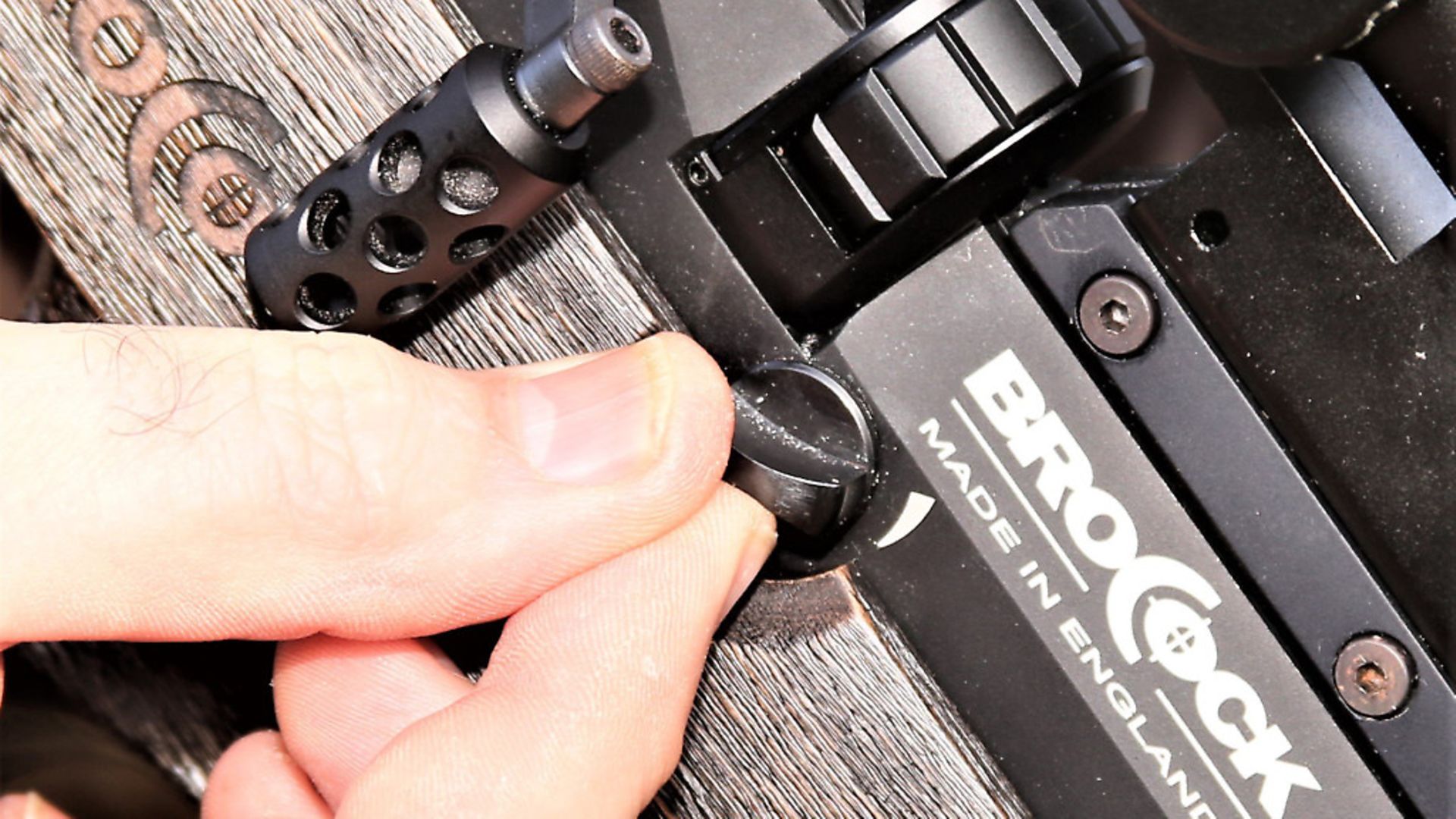 credit: Archant
credit: Archant
HANDLING REQUIREMENT
Enough of the self-praise nonsense, let’s deal in detail with, not what the Safari does, but how it’s delivered. As stated, the handling aspect of our rifles attains ever more importance as their potential performance ‘equalises’, due to the basic fact that groups just can’t keep getting smaller. Also, ‘potential’ is absolutely worthless if it isn’t realised, and the hard fact is, there isn’t a shooter on this planet capable of continually matching the potential of any of the acknowledged top guns under field conditions. The real deal, therefore, is how much of that potential is realistically available to us, and how much help the rifle provides in accessing it. In short, is this rifle easy to shoot accurately?
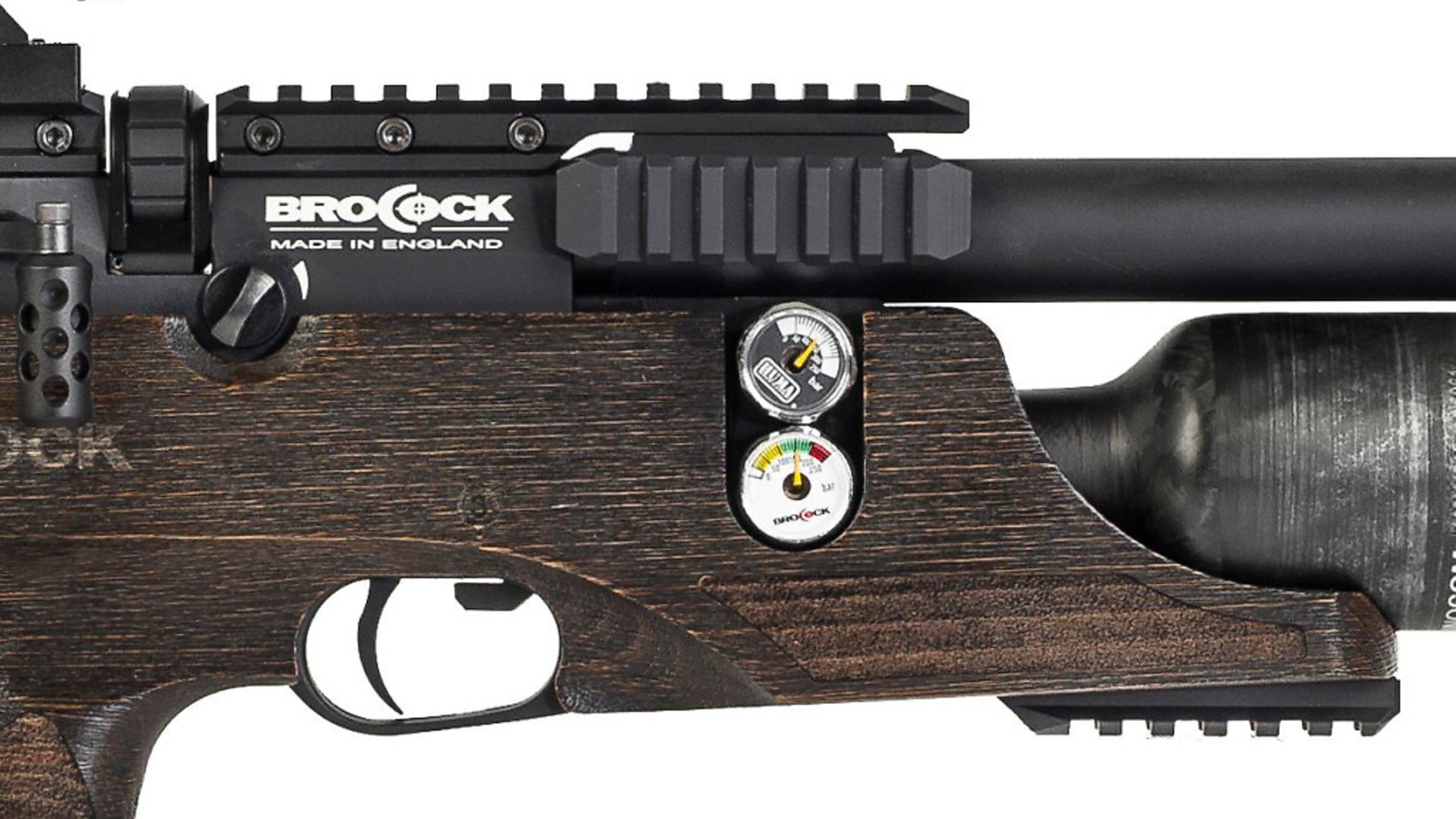 credit: Archant
credit: Archant
DOES IT DELIVER?
First, any rifle that can be adjusted to fit its user throws a supportive arm around that shooter’s shoulder. The science of ergonomics teaches us that we each have an ideal stance and configuration that makes the most of our infinitely varying personal geometry. As soon as we’re obliged to move away from that ideal stance, we’re dealing with compromise, and that’s always a barrier to optimum performance.
Adjustable guns allow us to bring the rifle to us, rather than the other way round, and that’s how it needs to be if we’re going to get the most from what we’re shooting. The Safari doesn’t have a ‘go-anywhere’ stock like a field target rifle, but the available adjustments help enormously with gun fit.
The rifle’s ‘in the shoulder’ stability and balance contribute significantly to its positive handling, and details such as grip design and trigger function do the rest. The combined effect is a most ‘helpful’ rifle, indeed, and as I keep banging on about, that’s exactly what’s needed for all-round performance.
NOTABLE FEATURES
I particularly appreciated the Safari XR’s trigger performance. Unusually for me, I had a right old mess about with the test rifle’s trigger settings and arrived happily at my preferred combination of a fairly long first stage, followed by a totally predictable, ‘winter safe’ let-off, that didn’t change in any way as my test went on. This is a top trigger.
The stack of sound-soaking baffles inside the Safari’s full-length barrel shroud does a fair job of silencing each shot, but I borrowed a 0dB silencer from a Brocock fanboy friend of mine, and it has to be said, that’s an accessory worth buying. I’d say it would be compulsory if you go the FAC route, but even at sub-12 it turns an acceptably modest muzzle bark into a breathy whimper.
As always, I didn’t appreciate resting my leading hand on a knobbly Picatinny accessory rail, and I’ve made a request to Brocock that they should think about developing some sort of comfy forward grip/pad design to fit on that accessory rail. Until they do that, I’d remove the bit of rail.
INITIAL VERDICT
Brocock air rifles grew up a few years ago, now, and the latest offering you see here is a perfect example of how far they’ve come. Their price has grown up right alongside them, too, and the new Safari XR starts at £1416, which puts it right up there with the top guns, and that’s where it belongs.
This rifle imparts confidence, thanks to its obvious solidity, the high-end components, and the consistent quality of its performance. The Safari XR is a high-precision sporting air rifle that has been designed and built to deliver in all weathers, and it’s built on a platform that can be tailored to your needs. It’s a genuinely impressive air rifle, and I’m looking forward to what the next month of testing will bring. Here’s to being on Safari – and loving it.
TECHNICAL SPECIFICATION
Model: Brocock Safari Sniper XR
Manufacturer: Brocock
Country of origin: UK
Price: £1416
Type: Pre-charged pneumatic, multi- and single-shot, sporter
Calibre: .22, .177, .25
Cocking/loading: Side-lever
Trigger: 2-stage, adjustable, with manual, resettable safety
Stock type: Ambidextrous, laminated thumbhole
Weight: 3.3kg (7.3lbs) rifle only
Length: 863mm (34ins)
Barrel: 432 mm (17 ins)
Shots per charge: 380-plus in .177 and 400-plus in .22, at11-plus ft.lbs.
Average energy: 11.5 ft.lbs.
Contact: All Brocock stockists
www.brocock.co.uk